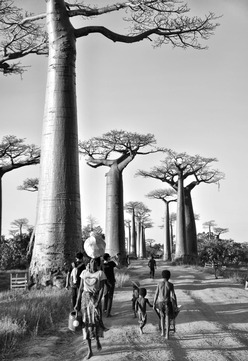Forms of Life and Life's Enhancement
January 19, 2017 • By William Schweiker and Günter Thomas
Upon reading the phrase “taxonomy of life”, such concepts as kingdom, phylum, class, order, family, genus, and species come to mind. In this excerpt from The Enhancing Life Project’s report for the Religion and Culture Web Forum, written by William Schweiker, Edward L. Ryerson Distinguished Service Professor of Theological Ethics at the University of Chicago, and Günter Thomas, Professor of Systematic Theology and Ethics at Ruhr-University Bochum in Germany, Principal Investigators for The Enhancing Life Project, the concept of taxonomy is broadened to reflect life as it extends in all directions.
Forms of Life
Drawing on the work of William Schweiker and others interested in “moral naturalism,” as it is called, we have identified five forms of life and goods that, ex hoptheosis, can further join research on enhancing life. These forms are analytic distinctions but not separations. The most complex forms of life, like human beings, include them all, and, further, every form of life, as evolving realities, are open in potential to all of them as well. Further, these are not normatively ordered nor necessarily in some hierarchy. What is sought is a taxonomy of life. What are these forms of life and their several interlocking goods? We now list them with a brief description of each realizing, again, that these are not lexically ordered but in fact interact in exceedingly complex, reflexive, and mutually adaptive ways, and, further, that each form of life can find different expressions thus constituting the universe of living beings. There are many sub-types of goods and forms that fall under these general forms of life. These two points are meant to express the wild pluriformity of life and its continuing diversity and adaptability except in conditions, often human made, that thwart the dynamics of living beings. So, what are these forms of life and their several interlocking goods?
1. Living things have a bodily/material form. All living things have a physical or bodily dimension that interacts with environments through processes such as metabolism, reproduction, and death. The aim or good of living things as material reality is to persist in being and enhance their fundamental thrust or power of life.
2. Even the most elementary forms of life have a social/communal form. Many living things are profoundly social and the complex forms of social interaction (from kin selection to law and economics) are fundamental to enhancing life. Within the social form of life there is a proliferation of goods depending on the living thing in question. Social cooperation, as E. O. Wilson has long argued, is present among ants as well as humans but the variety of goods sought obviously differs greatly: e.g., an ant hill is not a human home in terms of goods sought.
3. The environmental/local form of life takes into consideration that living things are always and everywhere set within “environments” or “localities.” These range from environmental niches to complex religious symbolic forms (say, the Reign of God). Importantly, goods are then interrelated with the various localities within which a form of life inhabits. Human beings, for instance, are located in time and in space, in imaginative and communicative forms (e.g., memory), as well as in relation to other human communities that form the environments for each other. Here too there are a range of goods depending of the kinds of localities involved and how interaction with those localities is to be sustained and enhanced.
4. Reflexive/cultural form: The most complex types of life develop kinds of reflexive awareness of themselves, others, and environments and sophisticated means of expressing these symbolically. In human existence, this is the domain of culture (broadly understood), language, art, media and human consciousness. Increasingly we know of forms of reflexivity that are found in non-human animals and also in forms of artificial life and intelligence. Reflexive goods are then ends and aims of meaning, value, and worth against the complex interaction of others’ forms of life and their goods. This means, in many respects, that reflexive goods are profoundly vulnerable and fragile.
5. Moral/religious form: The most complex and elaborate forms of living things must not only meet the challenge of survival and social cooperation in creative ways, but also confront these questions: what is the meaning and value of being alive? How ought one live and interact with self, others, and environments? What powers or “sacred” realities are active within the dynamics of life? How does one integrate the others’ goods of life with respect to the duties owed to others and one's self? This form of good or aim of a living thing is also vulnerable to forces within and without of that form of life (e.g., moral weakness, tyranny or injustice) and they mark a form of life as a spiritual life form since the "form" of that living being is related to but not reducible to the other forms and goods of living things. This is the truth, we might say, of the ancient idea that the "soul" is the form of the body. In the terms of The Enhancing Life Project we can say that the moral/religious form of life is the "spirit" or "integrity" of the interrelation of other goods needed for life to flourish in and through the respect and enhancement of the integrity of life with and for others. This is the spiritual excellence, and hence good, of a form of life.
To download a PDF of the report, please click here.